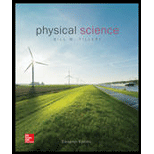
Physical Science
11th Edition
ISBN: 9780077862626
Author: Bill Tillery, Stephanie J. Slater, Timothy F. Slater
Publisher: McGraw-Hill Education
expand_more
expand_more
format_list_bulleted
Textbook Question
Chapter 15, Problem 11PEB
What is the mass of the Sun, in kilograms, based on the orbital period and distance from Neptune?
Expert Solution & Answer
Want to see the full answer?
Check out a sample textbook solution
Students have asked these similar questions
A moon of Uranus takes 13.5 days to orbit at a distance of 5.8 ✕ 105 km from the center of the planet. What is the total mass (in kg) of Uranus plus the moon?
The average density of the planet Neptune is 1.67 x 10 ² kg/m² It's up. The ratio of the mass of the planet Uranus to the mass of the planet Neptune It is 0.840. Ratio of the radius of the planet Uranus to the radius of the planet neptune It is 1.03. What is the average density of Uranus? A) 1.11x10 ² kg/m² B) 1.28x10 ² kg/m² C) 2.05x10 ² kg/m² D) 1.36x10 ² kg/m² E) 2.18x10 ² kg/m²
On December 25, 2004, the Huygens probe separated from the Cassini spacecraft orbiting Saturn and began a 22 day journey to Saturn’s moon Titan, on whose surface it landed. Besides the data in Appendix F, it is useful to know that Titan is 1.22 * 10^6 km from the center of Saturn and has a mass of 1.35 * 10^23 kg and a diameter of 5150 km. At what distance from Titan should the gravitational pull of Titan the gravitational pull of Saturn?
Chapter 15 Solutions
Physical Science
Ch. 15 -
1. The mass of the Sun is how much larger than...Ch. 15 -
2. The distance from Earth to the Sun is called a...Ch. 15 -
3. What type of planets are Mercury, Venus,...Ch. 15 -
4. Which of the following is most likely found on...Ch. 15 -
5. What is the outermost...Ch. 15 -
6. The planet that was named after the mythical...Ch. 15 -
7. A day on which planet is longer than a year on...Ch. 15 -
8. The day on which planet is about the same time...Ch. 15 -
9. Mars has distinct surface feature-related...Ch. 15 -
10. How many moons orbit...
Ch. 15 -
11. What is the largest planet in our solar...Ch. 15 -
12. Callisto, Europa, Ganymede, and Io...Ch. 15 -
13. The density of Jupiter is
a. 50 percent...Ch. 15 -
14. The only moon in the solar system with a...Ch. 15 -
15. Saturn’s rings are thought to be
a. composed...Ch. 15 -
16. The planet with the lowest average density,...Ch. 15 -
17. The planet that is not a giant...Ch. 15 -
18. What planets are considered...Ch. 15 -
19. Area of the solar system where long-period...Ch. 15 -
20. Short-period comets have orbital periods...Ch. 15 -
21. Remnants of comets and asteroids found in...Ch. 15 -
22. Meteorites are classified into all of the...Ch. 15 -
23. The most widely accepted theory on the origin...Ch. 15 -
24. The belt of asteroids between Mars and...Ch. 15 -
25. Which of the following planets would be...Ch. 15 -
26. Which of the following planets probably still...Ch. 15 -
27. Venus appears the brightest when it is in...Ch. 15 -
28. The small body with a composition and...Ch. 15 -
29. A small body from space that falls on the...Ch. 15 -
30. Planets in our solar system are classified...Ch. 15 -
31. What separates the terrestrial planets from...Ch. 15 -
32. The planet that has the shortest “year” among...Ch. 15 -
33. What planet is called the morning star and...Ch. 15 -
34. Venus “shines” because it is
a. composed of...Ch. 15 -
35. On Venus, the sun rises in the west. This is...Ch. 15 -
36. The “sister” planet to Earth...Ch. 15 -
37. What feature on Mars was considered by some...Ch. 15 -
38. Jupiter radiates twice as much energy as it...Ch. 15 -
39. The Great Red Spot is thought to be
a. a...Ch. 15 -
40. The metallic hydrogen that surrounds the core...Ch. 15 -
41. A shooting star is a...Ch. 15 -
1. Describe the protoplanet nebular model of the...Ch. 15 -
2. What are the basic differences between the...Ch. 15 -
3. Describe the surface and atmospheric...Ch. 15 -
4. What evidence exists that Mars at one time had...Ch. 15 -
5. Describe the internal structure of Jupiter and...Ch. 15 -
6. What are the rings of Saturn?
Ch. 15 -
7. Describe some of the unusual features found on...Ch. 15 -
8. What are the similarities and the differences...Ch. 15 -
9. Give one idea about why the Great Red Spot...Ch. 15 -
10. What is so unusual about the motions and...Ch. 15 -
11. What evidence exists today that the number of...Ch. 15 -
12. Using the properties of the planets other...Ch. 15 -
13. What are “shooting stars”? Where do they come...Ch. 15 -
14. What is an asteroid? What evidence indicates...Ch. 15 -
15. Where do comets come from? Why are...Ch. 15 -
16. What is a meteor? What is the most likely...Ch. 15 -
17. What is a meteorite? What is the most likely...Ch. 15 -
18. Technically speaking, what is wrong with...Ch. 15 -
19. What are the primary differences between the...Ch. 15 -
1. What are the significant similarities and...Ch. 15 - Prob. 2FFACh. 15 -
3. Evaluate the statement that Venus is Earth's...Ch. 15 -
4. Describe the possibility and probability of...Ch. 15 -
5. Provide arguments that Pluto should be...Ch. 15 -
6. Explain why is it difficult to count the...Ch. 15 - Prob. 1IICh. 15 -
1. Based on the density and diameter in km...Ch. 15 - Prob. 2PEBCh. 15 -
3. A scale model of the solar system is being...Ch. 15 -
4. How many times has Uranus rotated on its axis...Ch. 15 -
5. An elementary school class is building a scale...Ch. 15 -
6. A class is building scale models of the...Ch. 15 - Prob. 7PEBCh. 15 -
8. A 1 cm thick piece of lead with a surface area...Ch. 15 -
9. Assume an astronaut at a space station on Mars...Ch. 15 -
10. What is the mass of the Sun, in kilograms,...Ch. 15 -
11. What is the mass of the Sun, in kilograms,...Ch. 15 -
12. Based on Kepler’s third law, what is the...Ch. 15 -
13. Based on Kepler’s third law, what is the...Ch. 15 - Prob. 14PEBCh. 15 -
15. Assuming a circular orbit, what is the...
Knowledge Booster
Learn more about
Need a deep-dive on the concept behind this application? Look no further. Learn more about this topic, physics and related others by exploring similar questions and additional content below.Similar questions
- (a) One of the moons of Jupiter, named Io, has an orbital radius of 4.22 108 m and a period of 1.77 days. Assuming the orbit is circular, calculate the mass of Jupiter, (b) The largest moon of Jupiter, named Ganymede, has an orbital radius of 1.07 109 m and a period of 7.16 days. Calculate the mass of Jupiter from this data, (c) Are your results to parts (a) and (b) consistent? Explain.arrow_forwardAn asteroid is in a highly eccentric elliptical orbit around the Sun. The period of the asteroids orbit is 90 days. Which of the following statements is true about the possibility of a collision between this asteroid and the Earth? (a) There is no possible danger of a collision (b) There is a possibility of a collision. (c) There is not enough information to determine whether there is a danger of a collision.arrow_forwardWhat is the orbital period of a satellite orbiting just above the surface of the asteroid in Problem 11?arrow_forward
- Comet Halley (Fig. P11.21) approaches the Sun to within 0.570 AU, and its orbital period is 75.6 yr. (AU is the symbol for astronomical unit, where 1 AU = 1.50 1011 m is the mean EarthSun distance.) How far from the Sun will Halleys comet travel before it starts its return journey?arrow_forwardWhat is the escape velocity of Jupiter if its mass is 1.898 x 10^27 kg, and its diameter is 1.42 x10^5 kmarrow_forwardKepler’s First Law: Elliptical Planetary Orbits: The solar system major planet in the most elliptical solar orbit is little Mercury, which is the closest planet to the Sun. At Perihelion, Mercury’s distance from the Sun (Rp) is 0.31 AU. At Aphelion, Mercury’s distance from the Sun (Ra) is 0.47 AU. The intensity of Sunlight (I) that a planet receives from the Sun is inversely proportional to the square of that planet’s distance from the Sun (R). in other words, I = Constant / R2. Calculate how much more intense the Sunlight received by Mercury is at perihelion (p) than at aphelion (a): Rp2 = Ra2 = Ip / Ia = Ra2 / Rp2 =arrow_forward
- What would be the mass of a 60-kg astronaut on a planet with the same density as Earth and having twice Earth's radius? a.240 kg b. 120 kg c. 60 kg d. 30 kgarrow_forwardThe mass of Uranus is 8.68 ✕ 1025 kg, and the mass of Neptune is 1.02 ✕ 1026 kg. The average distance of separation, measured between their centers, is 1.63 ✕ 109 km. (a) Locate the center of mass (in m) of the Uranus-Neptune system as measured from the center of Uranus. Answer:____________________ m from Uranus's center (b) Is the center of mass of the system located within Uranus? (Assume Uranus has a radius of 2.54 ✕ 107 m.) Answer: Yes or Noarrow_forwardThe escape velocity from the surface of planet A is 5700 m/s. Planet B has the same density but the radius is 1/3 that of planet What is the escape velocity from the surface of planet B in m/s?arrow_forward
- The average density of the planet Mercury in 5.61 * 10^3 kg/m^3. The acceleration of gravity on its surface is 3.92m/s^2. Calculate the average radius of Mercury.arrow_forwardA planet has mass 2*10^26 kg and radius 60,000 km. What is the gravitational field strength ("g") on the surface of the planet?arrow_forwardThe planet Neptune has a satellite, Proteus, which travels in an orbit of radius 1.180×108 m with a period of 1.12 days. Calculate the mass of Neptune from this information.arrow_forward
arrow_back_ios
SEE MORE QUESTIONS
arrow_forward_ios
Recommended textbooks for you
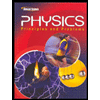 Glencoe Physics: Principles and Problems, Student...PhysicsISBN:9780078807213Author:Paul W. ZitzewitzPublisher:Glencoe/McGraw-Hill
Glencoe Physics: Principles and Problems, Student...PhysicsISBN:9780078807213Author:Paul W. ZitzewitzPublisher:Glencoe/McGraw-Hill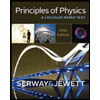 Principles of Physics: A Calculus-Based TextPhysicsISBN:9781133104261Author:Raymond A. Serway, John W. JewettPublisher:Cengage Learning
Principles of Physics: A Calculus-Based TextPhysicsISBN:9781133104261Author:Raymond A. Serway, John W. JewettPublisher:Cengage Learning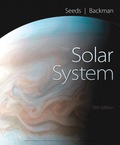
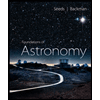 Foundations of Astronomy (MindTap Course List)PhysicsISBN:9781337399920Author:Michael A. Seeds, Dana BackmanPublisher:Cengage Learning
Foundations of Astronomy (MindTap Course List)PhysicsISBN:9781337399920Author:Michael A. Seeds, Dana BackmanPublisher:Cengage Learning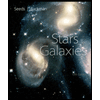 Stars and Galaxies (MindTap Course List)PhysicsISBN:9781337399944Author:Michael A. SeedsPublisher:Cengage Learning
Stars and Galaxies (MindTap Course List)PhysicsISBN:9781337399944Author:Michael A. SeedsPublisher:Cengage Learning College PhysicsPhysicsISBN:9781305952300Author:Raymond A. Serway, Chris VuillePublisher:Cengage Learning
College PhysicsPhysicsISBN:9781305952300Author:Raymond A. Serway, Chris VuillePublisher:Cengage Learning

Glencoe Physics: Principles and Problems, Student...
Physics
ISBN:9780078807213
Author:Paul W. Zitzewitz
Publisher:Glencoe/McGraw-Hill

Principles of Physics: A Calculus-Based Text
Physics
ISBN:9781133104261
Author:Raymond A. Serway, John W. Jewett
Publisher:Cengage Learning


Foundations of Astronomy (MindTap Course List)
Physics
ISBN:9781337399920
Author:Michael A. Seeds, Dana Backman
Publisher:Cengage Learning

Stars and Galaxies (MindTap Course List)
Physics
ISBN:9781337399944
Author:Michael A. Seeds
Publisher:Cengage Learning

College Physics
Physics
ISBN:9781305952300
Author:Raymond A. Serway, Chris Vuille
Publisher:Cengage Learning
Kepler's Three Laws Explained; Author: PhysicsHigh;https://www.youtube.com/watch?v=kyR6EO_RMKE;License: Standard YouTube License, CC-BY